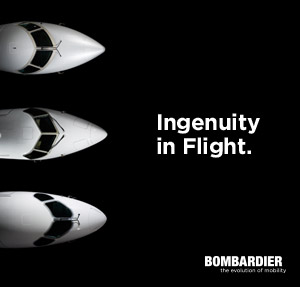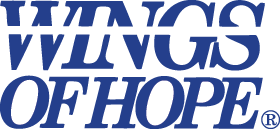Jamaica tourist arrivals up
March 2, 2009
Year-to-date through February 21, tourist arrivals are up 4.6% compared to the same period last year. Prime Minister Bruce Golding, speaking at a luncheon in Montego Bay, said that Jamaica was ahead of most of its Caribbean competitors.
American adds second flight between Miami and San Salvador
March 2, 2009
American announced that it will operate a second daily flight between Miami and San Salvador, El Salvador seasonally from June 11 through August 24, 2009. The flight will be operated with a B737-800 configured for 148 seats, 16 in Business Class and 132 in Economy.
AirTran launches new service to Cancun
March 2, 2009
On February 25, AirTran began daily non stop service between Atlanta and Cancun. Flight 41, Atlanta-Cancun departs Atlanta at 9:55 am and arrives Cancun at 11:25 am. Flight 42, Cancun-Atlanta departs Cancun at12:15 pm and arrives Atlanta at 3:50 pm.
NASA Flying Wing Model Soars Into National Air and Space Museum
March 2, 2009
WASHINGTON, March 2 /PRNewswire-USNewswire/ — A flying model NASA built to research futuristic aircraft designs will spend its future in the United States’ premier air and space museum.
The 12-foot wing span blended wing body, or BWB, model, used during wind tunnel flight tests at NASA’s Langley Research Center in Hampton, Va., is on long-term loan to the “How Things Fly” gallery at the Smithsonian Institution’s National Air and Space Museum in Washington.
“One key focus of NASA aeronautics research is to develop technologies to make aircraft more fuel efficient and environmentally friendly,” said Jaiwon Shin, associate administrator for NASA’s Aeronautics Research Mission Directorate in Washington. “Because of these technologies, airplanes may look very different 20 years from now. This model will give visitors to the Smithsonian a glimpse into the future of air travel.”
The model was tested in a wind tunnel to help engineers better understand how the blended wing body handles. The five-percent scale model has 18 control surfaces along the trailing edges of the wing, compared to four on most airplanes. Those four are the rudder, the ailerons, the elevator and the flap. One of the challenges to controlling a flying wing is determining how to blend the control surfaces to make the vehicle turn and climb.
The blended wing body resembles a flying wing, unlike today’s “tube-and-wing” aircraft. “When you get rid of the tail you have to come up with different ways to control the plane,” said Dan Vicroy, a senior research engineer at Langley. “We have a lot of experience with conventional airplanes. We know how to predict how they are going to fly. But with this type of a flying wing design, we have fewer examples and less confidence in our flying quality estimates.”
Vicroy led the “free flight” experiment in the Langley Full Scale Tunnel’s huge 30-by-60-foot test section. “We actually flew this BWB in the tunnel in 2005,” said Vicroy. “We had control systems on board the model as well as high pressure air that we used to simulate the engines.” The model was constrained only by a tether cable.
In the National Air and Space Museum, the blended wing body model will hang from the ceiling about 15 feet above visitors’ heads. “The model is an important part of a facelift of the gallery that we hope will be done by March 2009,” said Michael Hulslander, the How Things Fly gallery manager. “This is the most visited gallery in the museum, and the BWB will be the largest artifact in it.”
Research on blended wing body designs continues in the Subsonic Fixed Wing Project of NASA’s Fundamental Aeronautics Program. They are part of hybrid wing body research into acoustics, structures, aerodynamics and flight controls.
Raytheon Provides Full Connectivity in Industry First
March 2, 2009
U.S. Army’s Experimental Force employs Raytheon’s networking technology
FORT BENNING, Ga., March 2, 2009 /PRNewswire/ — In an industry first, Raytheon Company (NYSE: RTN) established a seamless, tactical wireless network that delivered simultaneous voice, data and video among soldiers, vehicles and unmanned systems.
The mobile ad-hoc network was demonstrated during the U.S. Army’s Expeditionary Warrior Experiments for the U.S. Army’s Experimental Force.
“We are providing today’s future force with solutions it can use for tomorrow’s challenges,” said Jerry Powlen, vice president, Network Centric Systems’ Integrated Communications Systems. “These exercises highlighted our ability to deliver command and control capabilities and situational awareness for the dismounted soldier.”
During the government-sponsored exercises, Raytheon deployed its Enhanced Position Location Reporting System as the tactical wireless network. The EPLRS network provided end-to-end connectivity for soldiers to evaluate networked solutions from unmanned aerial vehicles and other sensors.
The company also established a wireless connection between the EPLRS network and its high-capacity, beyond line-of-site troposcatter system. The link enabled high-capacity communication directly to the dismounted soldier in extended ranges without the need for satellites.
Raytheon Company, with 2008 sales of $23.2 billion, is a technology and innovation leader specializing in defense, homeland security and other government markets throughout the world. With a history of innovation spanning 87 years, Raytheon provides state-of-the-art electronics, mission systems integration and other capabilities in the areas of sensing; effects; and command, control, communications and intelligence systems, as well as a broad range of mission support services. With headquarters in Waltham, Mass., Raytheon employs 73,000 people worldwide.
Tyco Electronics Receives Silver Boeing Performance Excellence Award
March 2, 2009
HARRISBURG, Pa., March 2 /PRNewswire-FirstCall/ — Tyco Electronics Ltd. (NYSE: TEL; BSX: TEL) today announced that it has received a 2008 Boeing Performance Excellence Award. The Boeing Company issues the award annually to recognize suppliers who have achieved superior performance. Tyco Electronics maintained a Silver composite performance rating for each month of the 12-month performance period, from Oct. 1, 2007, to Sept. 30, 2008.
This year, Boeing recognized 411 suppliers who achieved either a Gold or Silver level Boeing Performance Excellence Award. Tyco Electronics is among 325 suppliers to receive the Silver level of recognition.
“We are absolutely delighted to receive this high level of recognition from Boeing,” said Kevin Rock, president of Tyco Electronics’ Aerospace, Defense & Marine Business Unit. “Earning this award clearly demonstrates our commitment to their programs and highlights the excellent working relationship that exists between our two companies.”
Tyco Electronics supplies interconnection products and other electronic components to Boeing for various aircraft programs.
ABOUT TYCO ELECTRONICS
Tyco Electronics Ltd. is a leading global provider of engineered electronic components, network solutions, undersea telecommunication systems and wireless systems, with 2008 sales of $14.8 billion to customers in more than 150 countries. We design, manufacture and market products for customers in industries from automotive, appliance and aerospace and defense to telecommunications, computers and consumer electronics. With nearly 8,000 engineers and worldwide manufacturing, sales and customer service capabilities, Tyco Electronics’ commitment is our customers’ advantage.
Lockheed Martin Delivers Third C-5M Super Galaxy to United States Air Force
March 2, 2009
MARIETTA, Ga., Feb. 27 /PRNewswire/ — Lockheed Martin (NYSE: LMT) today delivered the third fully modernized C-5M Super Galaxy to the U.S. Air Force. Following a small send-off at the company’s Marietta facility, the C-5M flew to Dover AFB, Del.
“This delivery is yet another success in the C-5 modernization program,” said Lorraine Martin, Lockheed Martin C-5 program vice president. “I’m confident the Air Force will be as impressed with the improved performance, reliability and capability of the Super Galaxy as we were during flight test.”
This was the second C-5M to be delivered to Dover this month, and was the third and final aircraft delivered during the System Design and Development phase of the program. The C-5M program will enter production this summer. Induction of the first aircraft is planned for August.
The C-5M Super Galaxy climbs higher and faster than its legacy counterparts while carrying more cargo over longer distances. It also requires less tanker support and is projected to have a much higher mission availability rate due to increased reliability. Current Air Force plans call for Lockheed Martin to deliver 52 fully modernized C-5Ms by 2016.
The C-5M is the product of a two-phase modernization effort. The first, the ongoing Avionics Modernization Program (AMP), provides a state-of-the-art glass cockpit with modern avionics and flight instruments that meet future Communication, Navigation, Surveillance and Air Traffic Management requirements. AMP kit installations have now been completed on more than 40 C-5Bs. Lockheed Martin is under contract to perform AMP modifications on 111 C-5 aircraft.
The Reliability Enhancement and Re-Engining Program (RERP) is the second phase of the C-5 modernization effort. It includes 70 enhancements or replacements of major components and subsystems, including the installation of GE CF6-80C2 commercial engines. Modernization of the C-5 pays for itself through savings in operation and sustainment costs.
The C-5 has been the backbone of strategic airlift in every engagement since it entered service. It is the only aircraft capable of carrying 100 percent of certified air-transportable cargo, with a dedicated passenger compartment enabling commanders to have troops and their equipment arrive in an area of operation simultaneously. The C-5 can carry twice the cargo of other strategic airlift systems. With more than 70 percent of its structural service life remaining, the C-5M Super Galaxy will be a force multiplier through 2040.
Headquartered in Bethesda, Md., Lockheed Martin is a global security company that employs about 146,000 people worldwide and is principally engaged in the research, design, development, manufacture, integration and sustainment of advanced technology systems, products and services. The corporation reported 2008 sales of $42.7 billion.
Dornier Aviation of North America Bankruptcy Trustee Announces Settlement of Litigation with China’s Hainan Airlines
March 2, 2009
Payment of $14,950,000 to Fund Full Payment of Claims in Bankruptcy Case
WASHINGTON, Feb. 27 /PRNewswire/ — Wiley Rein partner H. Jason Gold, the court-authorized liquidating trustee for the bankruptcy estate of Dornier Aviation (North America), Inc. (DANA), announced today that the bankruptcy court has approved a full and final settlement of all litigation and disputes with Hainan Airlines, a major international airline based in China. Hainan has paid the trustee $14,950,000 in consideration of the settlement and Gold is now moving to dismiss all legal actions filed against Hainan. The trustee had brought suit back in December 2003 and final judgment was obtained in August of last year to recover unpaid accounts. U.S. Bankruptcy Judge Steven S. Mitchell presided over the case and approved the settlement.
“We are pleased to have reached this compromise and settlement with Hainan. The funds recently paid will now allow us to pay in full the claims asserted by the creditors of the bankrupt company Dornier Aviation of North America, including numerous individuals and American companies, large and small,” said Gold.
Mr. Gold is head of Wiley Rein’s Bankruptcy & Financial Restructuring Practice. The firm served as Mr. Gold’s counsel in the DANA/Hainan Airlines litigation.
Jeppesen Announces First Flight Using Class 2 EFB With Airport Moving Map
March 2, 2009
ENGLEWOOD, Colo., Feb. 27 /PRNewswire/ — Jeppesen announced today that Continental Airlines has successfully completed the world’s first flight using Jeppesen Airport Moving Map on a Class 2 Electronic Flight Bag (EFB). Also on board were Jeppesen digital charts.
Continental plans an aggressive retrofit deployment of navAero Class 2 EFB systems starting with 12 airplanes the first month, leading to deployment on all Boeing 757 and 767 aircraft. Combined with Class 3 EFBs already deployed on Boeing 777 aircraft, Continental will have EFBs with Jeppesen Airport Moving Map and Jeppesen digital charts on most of its fleet.
“Jeppesen has provided navigation services for us for many years and we are pleased to partner with them on the implementation of this technology,” said Fred Abbott, vice president of flight operations for Continental Airlines.
Jeppesen was granted FAA Technical Standard Order (TSO) authorization for its Airport Moving Map application for Class 2 EFB devices in March 2008, and is the first and only company to have received such approval. Jeppesen Airport Moving Map uses a high resolution database to dynamically render maps of the airport, and through the use of GPS technology, show pilots their position (“own-ship”) on the airport surface. The result is much improved positional awareness among flight crews, which is a critical safety factor for reducing runway incursions during ground operations, especially at busy commercial airports with complex runway and taxiway layouts.
“This represents an important milestone as Jeppesen partners with Continental to increase efficiency on the flight deck and safety on the ground,” said Thomas Wede, Jeppesen senior vice president and general manager, Aviation. “By retrofitting their existing aircraft with Class 2 EFB hardware solutions and Jeppesen Airport Moving Map, Continental takes a major step forward in transitioning to a paperless flight deck and reducing the risk of runway incursions.”
The TSO-authorized Airport Moving Map software from Jeppesen is also selected for use by numerous airlines in the U.S. as part of the FAA Capstone 3 program. In this program, the FAA is providing approximately $600,000 to each airline to install equipment that will use Airport Moving Map technology. This program is part of the FAA’s effort to improve runway safety.
Jeppesen Airport Moving Map has been a featured application on Boeing’s highly successful Class 3 EFB since its introduction five years ago. To date more than 200 airplanes with Airport Moving Map capability have been delivered and are in operational service using Boeing Class 3 EFBs. With the TSO approval for Class 2 EFBs, Jeppesen is able to extend the reach of this important safety enabler as an attractive retrofit option for the large existing aviation fleet.
About Continental Airlines
Continental Airlines is the world’s fifth largest airline. Continental, together with Continental Express and Continental Connection, has more than 2,800 daily departures throughout the Americas, Europe and Asia, serving 135 domestic and 132 international destinations. More than 650 additional points are served via alliance partners. With more than 42,000 employees, Continental has hubs serving New York, Houston, Cleveland and Guam, and together with Continental Express, carries approximately 67 million passengers per year.
About Jeppesen
For 75 years Jeppesen has made it possible for pilots and their passengers to safely and efficiently reach their destinations. Today this pioneering spirit continues as Jeppesen delivers essential information and optimization solutions to improve the efficiency of air, sea and rail operations around the globe. Jeppesen is a subsidiary of Boeing Commercial Aviation Services, a unit of Boeing Commercial Airplanes.
Heli Expo 2009
March 2, 2009







